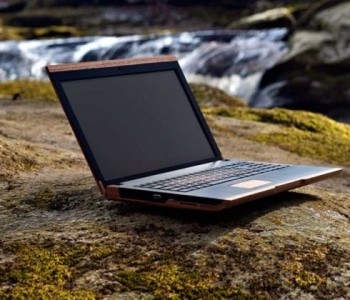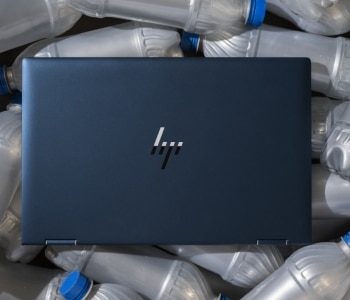Choosing greener IT
Eleanor Milner
Digital and eCommerce Assistant
July 21, 2021
We all know little things that can make our shopping habits increasingly more sustainable. Whether that be cutting fast fashion, buying more local and not forgetting our trusty bag for life. But how can we shop greener when it comes to the business technology we buy? Is it even possible?
Inevitably, following the surge in hybrid working, the demand for more and better technology in the home has not only increased but become significantly more crucial. So how important is it we buy our tech more consciously and where should we be looking?

The importance of sustainability in IT
As companies become increasingly more conscious of their IT carbon footprint, it is important to consider the entire lifecycle of the technology we use. Beginning with the vast resources required in production, manufacturing, and delivery. For instance, the primary material used in laptop production is plastic, accounting for 3.8% of global greenhouse gas emissions.
Meanwhile, secondary required materials such as cobalt, silver or lithium must be mined, once again releasing large quantities of carbon dioxide. Although, such emissions are yet again amplified in transport – not forgetting the energy used by simply powering our gadgets. It is said that the energy required by digital devices is much more than the global energy consumption all over the world 70 billion kilowatt-hours a year are required to run the internet. All of which will have evidently increased as COVID resulted in more home working, with computers consuming even more energy than networks and data centres.
However, despite the large resource usage to produce devices, our technology typically only lasts us a few years. Whether that’s because the new model is more appealing, or our laptop is just not as durable as it once was. This results in huge, agreeably unnecessary, e-waste. Read our previous blog post ‘technology without waste’ to learn more about DTP efforts in combating e-waste, by avoiding landfills and re-marketing or re-using old IT equipment. It has been estimated that while 160 million new laptops are made annually, a total of 160,000 are thrown away every day in the EU. Even when only considering a small aspect of the carbon footprint generated by the tech industry it is clear any steps towards becoming more sustainable will be whole-heartedly welcomed.
What sustainable technology is out there?
Impressively, Iameco’s D4R laptop is arguably as green as they get, built partly from wood rather than plastic. Ireland based, Iameco claim production uses 70% reused and recycled materials in addition to using 75% less water in production. Is it beginning to sound too good to be true? Well, unfortunately it is, Iameco’s D4R wooden ambition is not currently on the market to buy, though it is promising to see such innovative thinking in the works.
Thankfully, the tech giants are also embracing sustainable products. Apple has promised to make every single product carbon neutral by 2030. Currently, such efforts can be seen with their new 24-inch iMac which is made up of recycled materials with increasingly efficient energy performance. Meanwhile, HP’s current work with reducing the amount of ocean pollution is equally as impressive.
Each year 9 million metric tons, equivalent to the weight of 57,000 blue whales, of plastic circulate our oceans. Shockingly, experts predict by 2050 the amount of plastic in our oceans will surpass the population of fish. In response, HP have begun assembling new products using recycled ocean-bound plastics, as showcased with their new HP Elite Dragonfly.


Introducing the HP Elite Dragonfly
The HP Elite Dragonfly is made from 83% recycled plastics and is the first notebook to be made from ocean-bound plastic. By diverting plastic which would otherwise end up in the ocean, HP are protecting sea life and coastal habitats. Notably, HP’s sustainable impact efforts do not only protect the planet, but communities too. In collaboration with First Mile, they work with the people of Haiti to tackle plastic pollution, creating new opportunities for local residents through job creation and education. Since the initiative began in 2016, HP have used more than 60 million plastic bottles collected from Haiti in their products such as the HP Dragonfly and eco-conscious gadgets.
Although, what makes the HP Dragonfly particularly impressive is that the sustainability of the design does not divert from the high quality, practical performance of the PC. Certainly, the Dragonfly is equipped with built in privacy features, mobile and flexible 360 touch and advanced audio and display making it perfect for hybrid or remote working. Buying green goes beyond the products we buy but the companies we actively choose to support, while many claim sustainability is at the forefront of what they do, it is clear companies like HP are setting higher expectations for greener IT.
Admittedly, the IT industry has a long journey ahead of them when it comes to sustainability. As our reliance on technology increases, the demand for more and better technology heightens, and the pressure to produce only increases. However, beginning to support more eco-conscious brands and products is unquestionably a step in the right direction in reducing our individual IT carbon footprint.
If you would like to continue the conversation further, check out our latest podcast all about sustainability in the IT and public sector – episode below!







